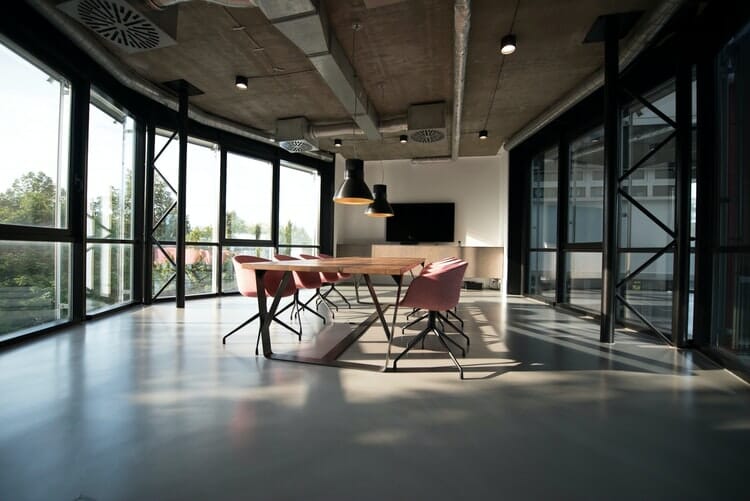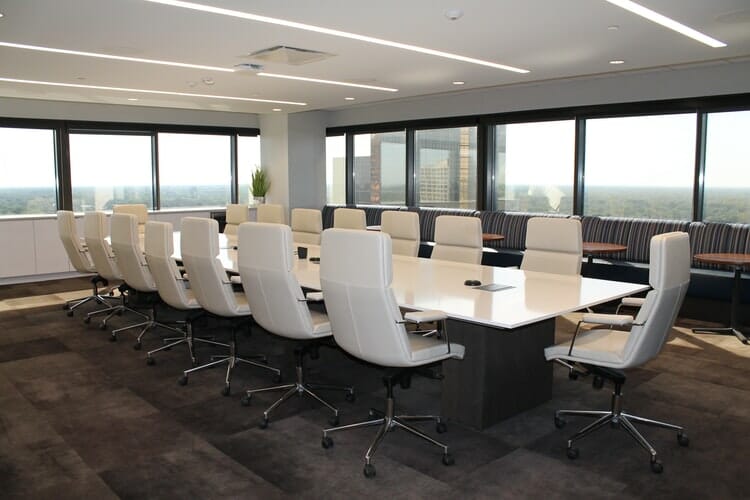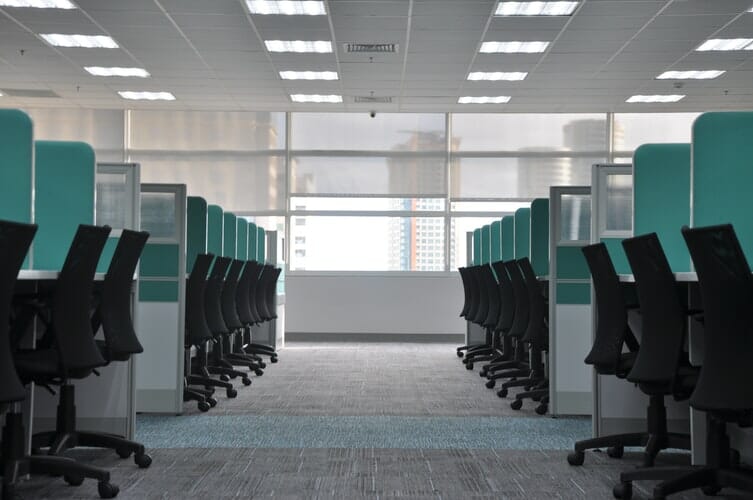Soundproofing and Acoustic Treatments in the Workplace: Luxury or Sound Investment?
Soundproofing and Acoustic Treatments in the Workplace: Luxury or Sound Investment?
Soundproofing and acoustical treatments are often viewed as luxuries and neglected during the planning phases of commercial buildings and workplaces. Architects and design professionals focus on structural integrity and spatial function, but it’s only when people start to work in those spaces that acoustic problems are revealed. Always eager to trim budgets, business owners may question whether investing in soundproofing and acoustical treatments is really necessary.
There’s plenty of research, however, that shows that unwanted noise impacts workers’ health and productivity, and this will hit you where it really hurts — your bottom line. The World Health Organization calculates that excessive noise levels cost Europe annual losses in the neighborhood of $52 billion! Do you know how much it costs you each year? You may be surprised to find out.
Soundproofing: Blocking External Noise and Ensuring Privacy in Office?
If you’ve ever worked in an office close to a railroad, a densely populated urban center, or an industrial area, you can probably relate to the frustration and stress you feel when you’re forced to pause a conversation or meeting while a mile-long train clangs by, honking traffic and fire trucks screech past your window, or heavy machinery whines, crashes, and hammers all day.

Blocking external noise is crucial to workers’ mental and physical health, and it’s closely tied to the success of your enterprise. In fact, WHO has said that traffic noise alone is harmful to the health of almost every third person in Europe, and researchers in Hong Kong have found that “noise is probably the most prevalent source of annoyance in offices.”
Beyond that, most people would simply prefer that their private conversations remain private, but even more importantly, speech privacy and confidentiality is an absolute requirement in medical, legal, and business settings. Discussions behind closed doors are meant to remain behind closed doors, and they require protection from external noise and distractions — whether from the outside or inside the building.
Soundproofing vs Acoustic Treatments
Soundproofing blocks sound from entering or leaving a space by changing structural elements to acoustically isolate one space from another, which is why soundproofing office walls is best tackled during construction.
Acoustic treatments, on the other hand, improve sound quality within a given space by controlling the way sound is reflected, absorbed, or diffused by walls, floors, and ceilings. Beacause they are easy to implement without contractors creating a mess in the office, they are going to be the easiest ways of retrofitting your existing office to achieve the level of office sound dampening you require.
How can I improve my conference room acoustics?
So, what’s the best approach to blocking external noise? Likewise, what’s the best way to keep sound inside a room — for privacy and confidentiality?
Start with the weakest points: windows and doors.

Windows and doors
Standard windows usually fall short in noise-blocking quality –– depending on the glaze and number of panes. Generally, solid-core doors are fairly good at blocking sound, but interior doors are often hollow-core and thinner, so they don’t block sound as well. The critical element in both cases, however, is how well you seal the gaps between the doors or windows and the frames they’re in.
Sound is like water; if there’s somewhere for it to go, sound will find it. It can pass through, under, and around doors that haven’t been acoustically sealed. According to an article on Forbes, a 1 percent opening in a wall or doorway will reduce the effectiveness of that barrier by 50 percent.
Walls
Depending on the type of building you’re in, the external walls may or may not provide enough soundproofing from the outside — it’s a function of their thickness and density. Often, internal walls with no insulation and shared studs transmit sound easily. Various approaches to soundproofing office walls exist — from de-coupling internal surfaces to doubling-up on the sheetrock — that serve to both increase walls’ density and isolate them from external noise that may transmit through the building’s infrastructure.
Ceilings
Finally, sound can transmit to adjacent spaces via ceiling spaces and/or ventilation ducts, so you need to seal those spaces as well.
Cost-effective Soundproofing and Acoustic Treatments for
Private Offices
Doors
Use our Door Seal Kits for the simplest way to begin soundproofing your commercial building or office space. They’re easy to install, and they offer the most effective solution for the price.
For home or professional recording studios, use our Studio 3D™ Soundproof Interior Doors. They are customizable to any size specification and come with ratings as high as 56 STC (Sound Transmission Class).
Ceilings
Products like, Noise S.T.O.P.™ Sound Barrier Acoustical Ceiling Tiles, combine soundproofing and acoustical treatment by incorporating a noise barrier on the back of the tile to help block sound from entering or leaving while also providing sound absorption on the front that helps control echo and reverberation within a space. You can also use Wood Wool Ceiling Tiles. These acoustic ceiling tiles reduce echo and reverberation through sound absorption.
Walls
Use high-performance office sound panels like Sound Silencer™ or FABRISORB™ acoustical wall panels that come in a wide range of aesthetically pleasing colors.
How do you soundproof a cubicle?
For those of us who spend our days in cubicles rather than private offices, we have to approach noise control differently from someone who spends theirs with the ability to close doors. We have smaller spaces to work with, and we don’t have the luxury of mounting things on wall studs. While we can’t really soundproof an open space like a cubicle, we can add some acoustic treatments that will help give us a little more privacy and increase our ability to concentrate.

The Walls
The most practical solutions are going to be ones that soften hard surfaces, minimizing echo and reverberation. Decorating the walls of your cube with thick fabric or decorative acoustical panels are a good place to start. Since they act as the “walls” in this case, they are typically the largest hard surfaces we deal with. Sound Silencer™ still works great in this case, because the available sizes are perfect for cubicle walls. Another huge benefit is that they are tackable, so you can effectively use your entire divider as a cork board.
Echo Eliminator™ hanging acoustical baffles are another fantastic solution if your company is willing to have them installed. When suspended above cubicle walls, they create the feel of more private offices, and help keep all the clickety clack and yakety yak that emanates from cubes from wandering into unwanted spaces.
The Floors
If you have hard floors, adding mats or rugs can help quite a bit. They can minimize the sound of your chair rolling around, and they can absorb some sound waves to boot. Keep in mind that any rug you place under your chair should allow it to roll without getting stuck.
The Takeaway
Soundproofing and acoustical treatments should not be overlooked when planning office spaces. They represent more than “mere comfort or luxury;” they should be seen as an essential investment in the health and productivity of employees and business professionals alike and, indeed, the bottom line. As they say, a happy worker is a productive worker.
If you’d like to explore our range of options with us, we’d love to hear from you. We can work with you to make a noticeable difference on almost any budget. Compared to the potential losses from not addressing noise problems, soundproofing and acoustical treatments such as office acoustic panels, are some of the best and most affordable investments you can make.




